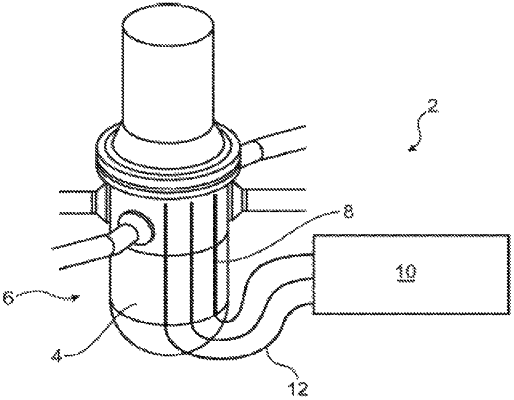| CPC G01T 3/006 (2013.01) [G01N 23/222 (2013.01); G21C 17/108 (2013.01)] | 15 Claims |

|
1. A system for measuring fast neutron fluence for a nuclear reactor, comprising at least one detector and an analysis device connected to each detector,
each detector comprising:
an optical waveguide including a primary dopant capable of transmuting, by neutron capture, into a secondary dopant, the secondary dopant having an atomic number different from that of the primary dopant, the secondary dopant being stable and being less neutron-absorbent than the primary dopant; and
a moderation layer configured to slow down fast neutrons and arranged between the optical waveguide and an external surface of a wall of a reactor vessel; and
the analysis device being configured, for each detector, to:
inject, into a corresponding optical waveguide, a secondary interrogation wave having a secondary wavelength at which the secondary dopant has an absorption peak, a smallest difference between the secondary wavelength and a wavelength corresponding to an absorption peak of the primary dopant being greater than or equal to a first predetermined minimum difference;
detect a secondary response wave emitted by the corresponding optical waveguide from the secondary interrogation wave;
calculate, from the detected secondary response wave, a piece of information relating to a concentration of secondary dopant in the corresponding optical waveguide; and
based on the calculated piece of information relating to the concentration of the secondary dopant, and conversion data relating to the nuclear reactor, determine a fast neutron fluence experienced by the wall of the vessel for a predetermined secondary period.
|